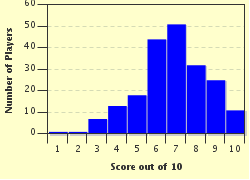Quiz Answer Key and Fun Facts
1. There were two periods of anti-Communist hysteria, or Red Scares, in the United States. One was during the late 1940s and early 1950s. When was the other?
2. "Iron Curtain" was a term used to describe the political and physical barriers between the Soviet bloc and the "free" countries of Europe. Who coined the term?
3. The policy of restricting Communist expansion, a policy called containment, was a key element of what doctrine?
4. A hot line is a communications system directly linking two remote points. What type of communications system comprised the first hotline that was installed in the White House and Kremlin in 1963?
5. A Civil Defense slogan taught children how to respond in the event of a nuclear strike. Fill in the blank with the name of an animal: _____ and cover.
6. Students in school were also taught how to live in a secure building, usually underground, that would protect inhabitants after a nuclear attack. What was the building called?
7. One huge concern of a child in the 1960s was what could happen after a huge nuclear explosion. Radioactive particles could remain in the atmosphere for quite some time. What were these particles called?
8. Prior to World War I, countries were involved in a contest of rapid production of military technology and equipment. This contest occurred once again during WWII, but after 1945, with the advent of nuclear technology, the stakes seemed higher. What is this competition normally called?
9. Why is it important for students to keep all these "isms" straight? Which of these is 'a political ideology and system that strives for a society with no classes or structures of government'?
10. Which American ballistic missile, with a patriotic name, was developed in the early 1960's to carry nuclear payloads?
Source: Author
ponycargirl
This quiz was reviewed by FunTrivia editor
bloomsby before going online.
Any errors found in FunTrivia content are routinely corrected through our feedback system.

